More than 31% of people who have lost work during COVID-19 are recording high levels of psychological distress — a rate four times more than employed Australian adults. Many lost work without notice and are facing high levels of financial stress.
These findings are part of our national study of people who have lost their jobs or have had their work hours reduced during the COVID-19 pandemic.
Since late March nearly 800,000 Australians have lost their jobs.
Millions more have had their work hours reduced or are working differently.
Unemployment is predicted to rise to between 10% and 15%.
Centrelink has been overwhelmed with people applying for the JobSeeker payment.
The negative impacts of prolonged unemployment on mental and physical health has been long recognised, and unemployment could emerge as the major public health crisis from COVID-19.
The early findings from 611 people enrolled in the study are outlined below.
The charts show the acute impacts affecting people in the first few weeks after social distancing measures and travel restrictions were introduced and many businesses closed.
Job loss happened very quickly
Almost 36% of our survey respondents lost their jobs, and about 64% are no longer working, though they remain employed.

Two-thirds of people in the study reported losing work, or losing their jobs, with zero or one day’s notice. About 90% lost work with less than one week’s notice.
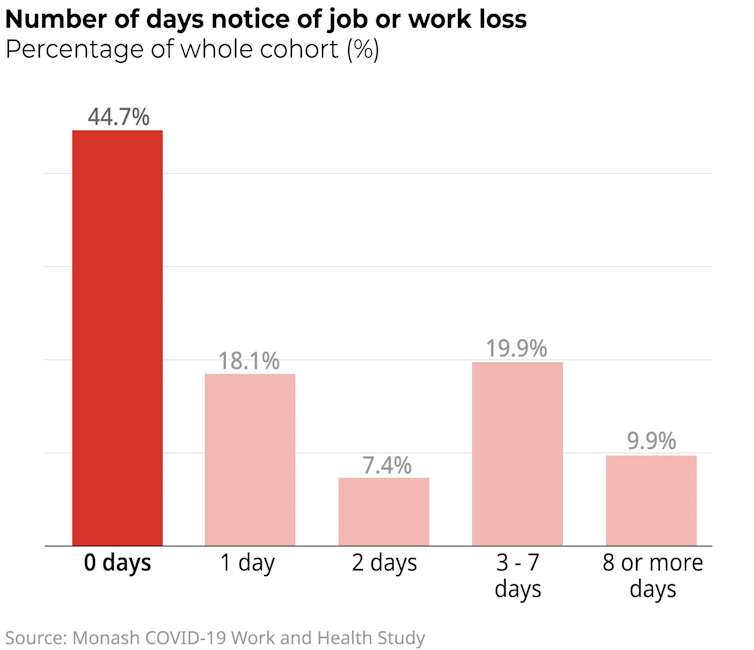
Incomes have dropped sharply
Before COVID-19 81% of people in the study reported an average weekly income of A$500 or more. The same people reported large drops in their income, with just under 29% reporting more than A$500 of income in the most recent week.
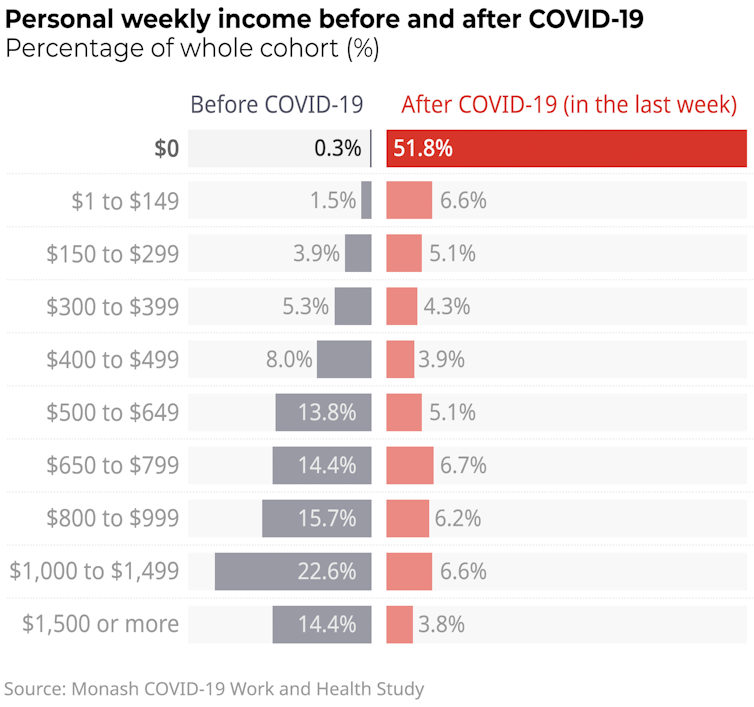
Most of the study data was collected after people lost jobs but before government stimulus payments such as JobSeeker, the coronavirus supplement and JobKeeper reached people’s bank accounts.
Accordingly, almost 52% of people reported having no income in the most recent week.
People are under severe financial stress
Not surprisingly given the situation outlined above, many people are already experiencing considerable financial stress.
People who have lost their jobs reported significantly higher levels of financial stress than survey respondents who have lost work but have remained employed.
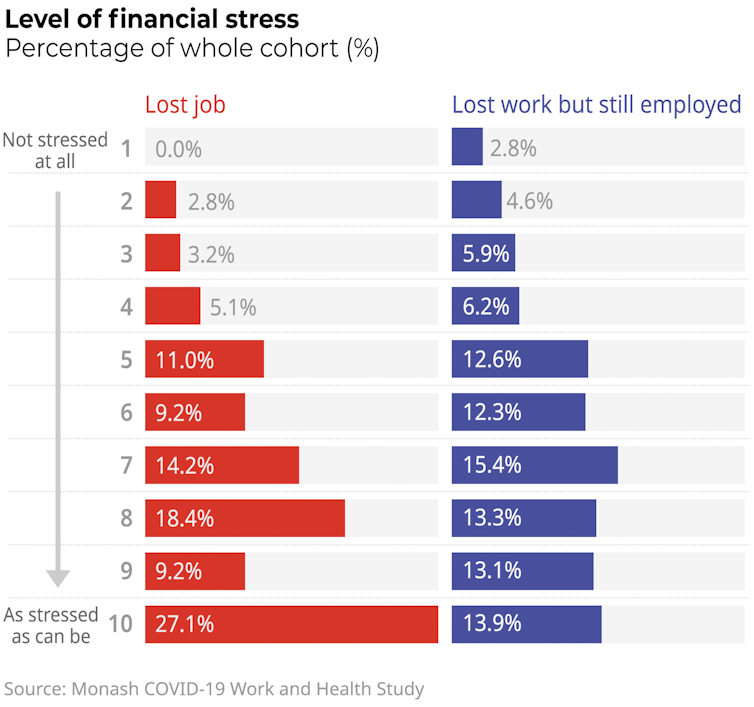
Many also indicated they would find is difficult to raise A$2,000 within a week.
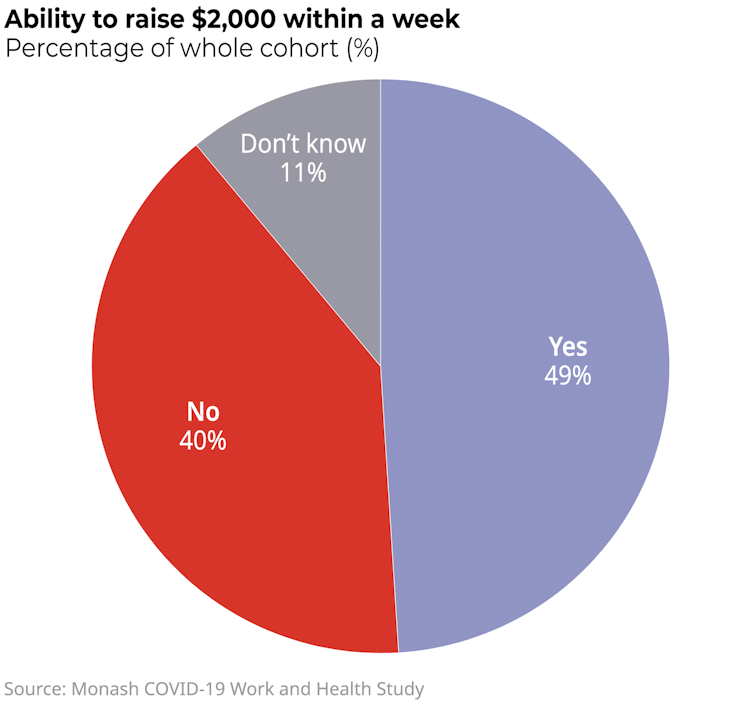
Psychological distress is very high
Rates of psychological distress are much higher in people losing work during COVID-19 than we typically see in working age Australians.
More than 30% of people are recording high levels of distress, a rate almost four times that usually observed in employed Australian adults.
Another third of study participants have moderate distress, again much higher than we normally observe.
A larger proportion of people who had lost their job reported high levels of distress compared to those who had lost work but were still employed.
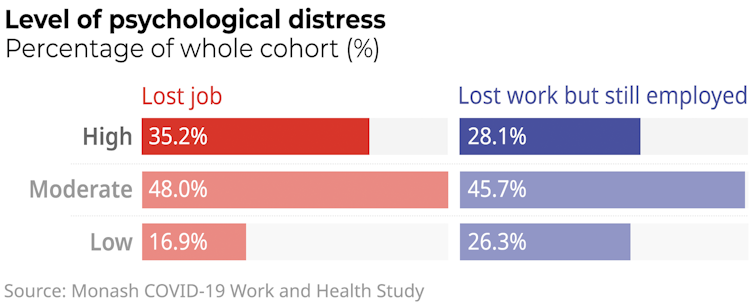
Most people are seeking government support
About 66% of study participants had already applied for Centrelink payments, intended to apply or had registered their intent to apply.
Once again, more people who have lost their jobs were in this category (77%) than those who had lost work but were still employed (59%).
More than 28% of participants reported that they were not eligible for any Centrelink benefits.
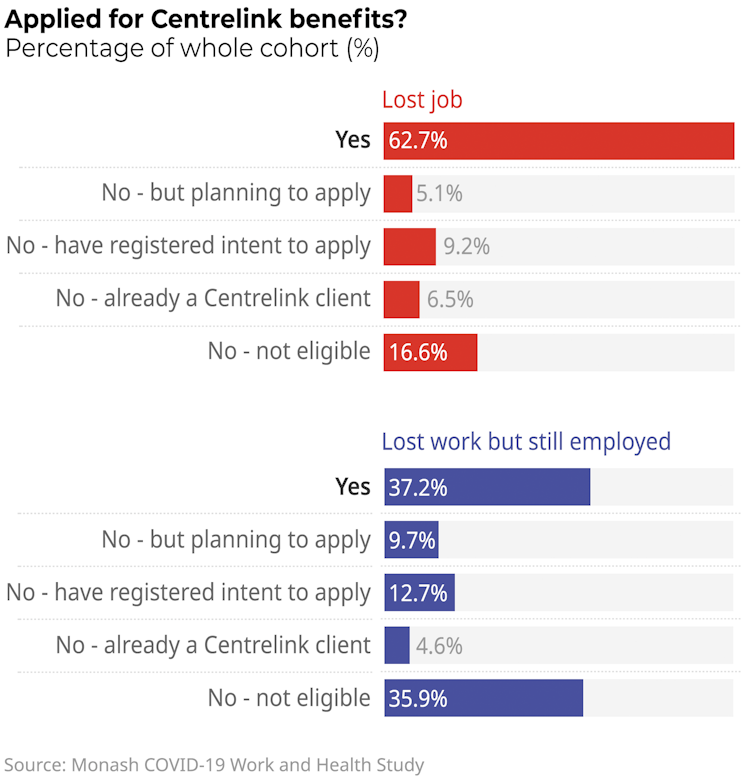
Looking forward to working again
As well as understanding people’s current financial and health status, the study asked people their thoughts about the future.
About 71% said they were not confident of being back in paid work in one month’s time.
People were much more positive about their job prospects in three and six months, with almost 68% of people saying they were somewhat confident or very confident they would be back in paid work in six months’ time.
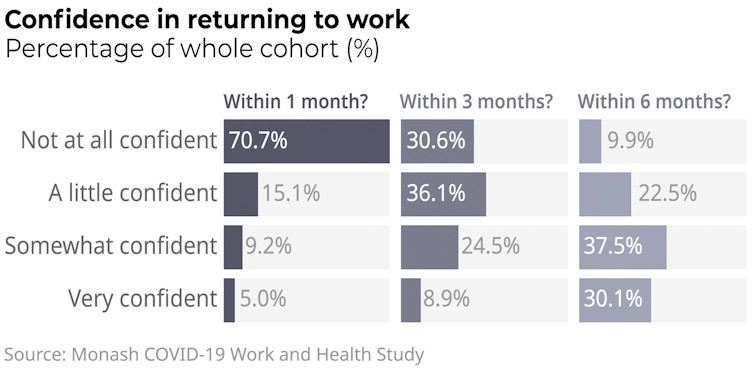
What next?
The high rates of psychological distress show that unemployment is much more than an economic problem.
It is also a serious public health dilemma.
The study will track people’s engagement in work and their health over the rest of 2020 to understand who is most affected and how health and work change over time as restrictions ease, businesses reopen and the economy recovers.
If you have lost work or lost your job during COVID-19, and you are aged 18 or over, you can participate in the study by visiting www.covidstudy.net.
Alex Collie, Professor, Monash University
This article is republished from The Conversation under a Creative Commons license. Read the original article.















